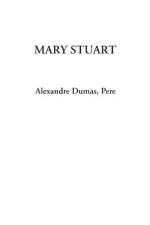This imprudent and desperate attempt delighted Elizabeth, for, according to the letter of the law, it finally gave her rival’s life into her hands. Orders were immediately given to Sir Amyas Paulet to seize the prisoner’s papers and to move her to Fotheringay Castle. The gaoler, then, hypocritically relaxing his usual severity, suggested to Mary Stuart that she should go riding, under the pretext that she had need of an airing. The poor prisoner, who for three years had only seen the country through her prison bars, joyfully accepted, and left Tutbury between two guards, mounted, for greater security, on a horse whose feet were hobbled. These two guards took her to Fotheringay Castle, her new habitation, where she found the apartment she was to lodge in already hung in black. Mary Stuart had entered alive into her tomb. As to Babington and his accomplices, they had been already beheaded.
Meanwhile, her two secretaries, Curle and Nau, were arrested, and all her papers were seized and sent to Elizabeth, who, on her part, ordered the forty commissioners to assemble, and proceed without intermission to the trial of the prisoner. They arrived at Fotheringay the 14th October 1586; and next day, being assembled in the great hall of the castle, they began the examination.
At first Mary refused to appear before them, declaring that she did not recognise the commissioners as judges, they not being her peers, and not acknowledging the English law, which had never afforded her protection, and which had constantly abandoned her to the rule of force. But seeing that they proceeded none the less, and that every calumny was allowed, no one being there to refute it, she resolved to appear before the commissioners. We quote the two interrogatories to which Mary Stuart submitted as they are set down in the report of M. de Bellievre to M. de Villeroy. M. de Bellievre, as we shall see later, had been specially sent by King Henry III to Elizabeth. [Intelligence for M. Villeroy of what was done in England by M. de Bellievre about the affairs of the Queen of Scotland, in the months of November and December 1586 and January 1587.]
The said lady being seated at the end of the table in the said hall, and the said commissioners about her—




